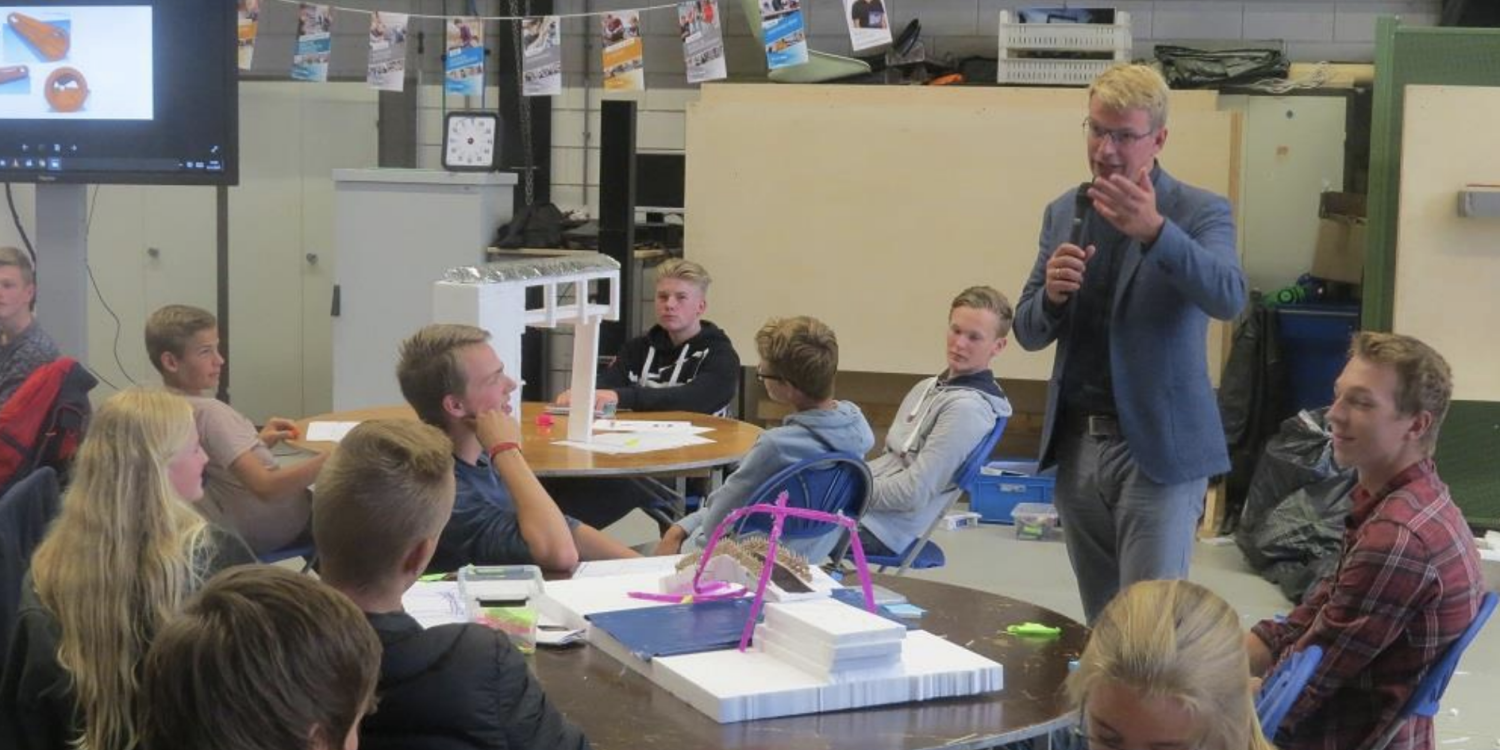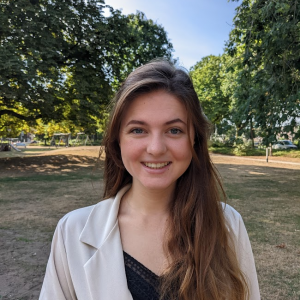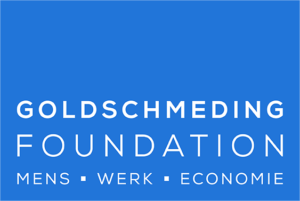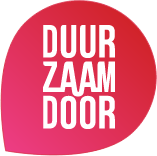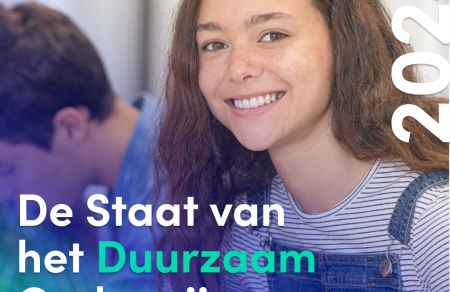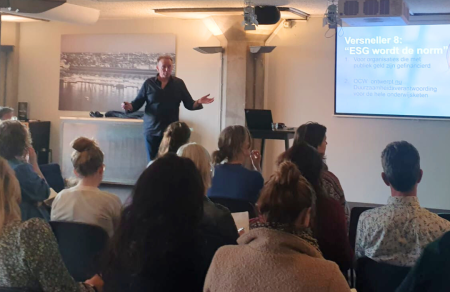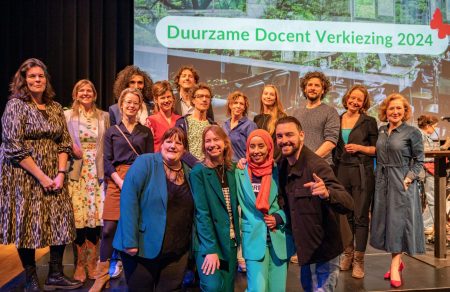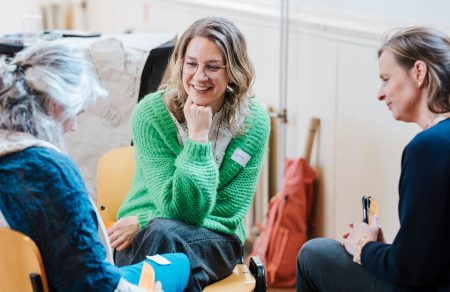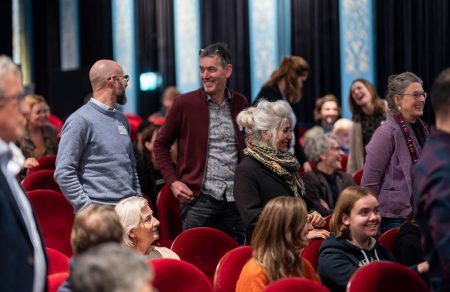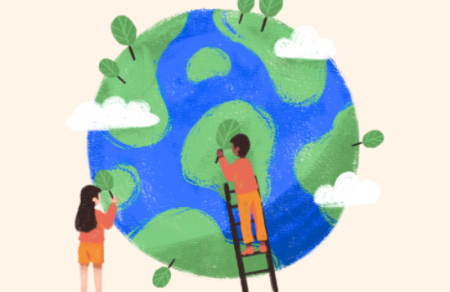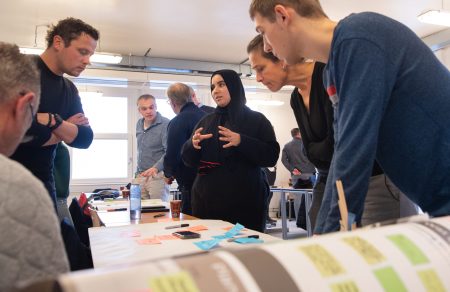Center Sustainable and life-like education in 6 steps
Together with Olga de Ridder, he pulls Center Sustainable. With this initiative, they want to encourage, connect and inspire; set a sustainable movement in motion. Their spearhead is that they want to experience adventures together with students and companies. Learning by experiencing, discovering and doing. They do this in three different ways. The first is the Sustainable Doing House, where students learn to work with the latest sustainable techniques. They also work on life-like education in 6 steps. You can read more about that below. Finally, they organize Sustainable Doing lectures, to bring everyone up to date on the latest developments.
So what does that life-like education look like in practice? In this course, the client is a company in the field. They share a challenge with the students, who then work on it. "A great example is the task of construction company Heijmans. They wanted to develop a circular tiny house. We then set to work on that in six steps."
The 6 steps for shaping lifelong education
Step 1: Introduction. Here we take the students to the client's location. There they tell more about the topic and the challenge. This is where the discovering and experiencing starts. "In this case, we went to a tiny house where Heijmans explained and a housing association explained the importance of this type of housing."
Step 2: Challenge. Students engage in the challenge and come up with initial ideas. We do this with an external facilitator, as this creates a fresh dynamic. After this day, they are given 10 weeks to develop an idea into final designs. Here we use design thinking and the business model canvas, but in simpler language. "The fun part was that Heijmans also wanted to build one of the designs. In this, students and staff pulled together and provided the materials. That's a wonderful form of development."
Step 3: Knowledge. Along the way, the student also needs knowledge. This knowledge is partly with the teacher and partly in the business world. For example, you can organize lectures/presentations around the topic.
Step 4: Practice Day. It is valuable to take students to a company for a day and have them work on a question here as well.
Step 5: Guest lectures. Invite speakers to school from the business community.
Step 6: Excursion. At the end of the course, return to the place where you started. In the beginning it was all new for the students, but after a few weeks they are now standing there as experts by experience. Here you can celebrate the completion of the trajectory together.
Energy as a flywheel
"What actually energizes you?" he then asks a group of professionals integral to sustainability in the mbo using the SustainaBul. Common answers are collaboration, nature and creativity. This question regularly forms a starting point for Roeland, whether he is working with his students, business or education professionals. In addition to the answers given, he hopes they are energized by learning new things. Because by seeing change as an opportunity, energy is also regularly created. This applies to all involved: "Students have fresh eyes. They think differently and do things differently, and in doing so they come up with new ideas that the business world has not yet thought about in that way. That is enormously valuable."
Taking teachers
Teachers are also very important in this. That is where the movement toward sustainability begins. For that reason, they are organizing sustainable expeditions, outside the school, for teachers to professionalize around this theme. "I took them to the edge of the IJsselmeer, where they followed a program on themes such as circularity. They also got to work formulating their own practical questions in line with the course, which they can then use in teaching."
Educational design
"Right now we are doing this mostly for construction, but increasingly for other courses as well," Roeland continues his story. "We use Digibib (vocational education consortium). There are (partial) assignments in there that we combine with a real-life project. We form that into a schedule of 10 to 20 weeks. Here we also determine what knowledge we have in-house and how we involve the business community. Ultimately, we always work toward a final presentation for the client. Lifelong learning provides practical preparation for the student for the internship and exam. It does require rewriting teaching materials, which takes time. In an ideal future, there is enough time and space to develop education together."
He closed his presentation with the words "Be the change you want to see in the world!"
Do you also want to work on embedding sustainability in mbo? See how you can use your role contributions and sign up for the network MBO for Tomorrow.
